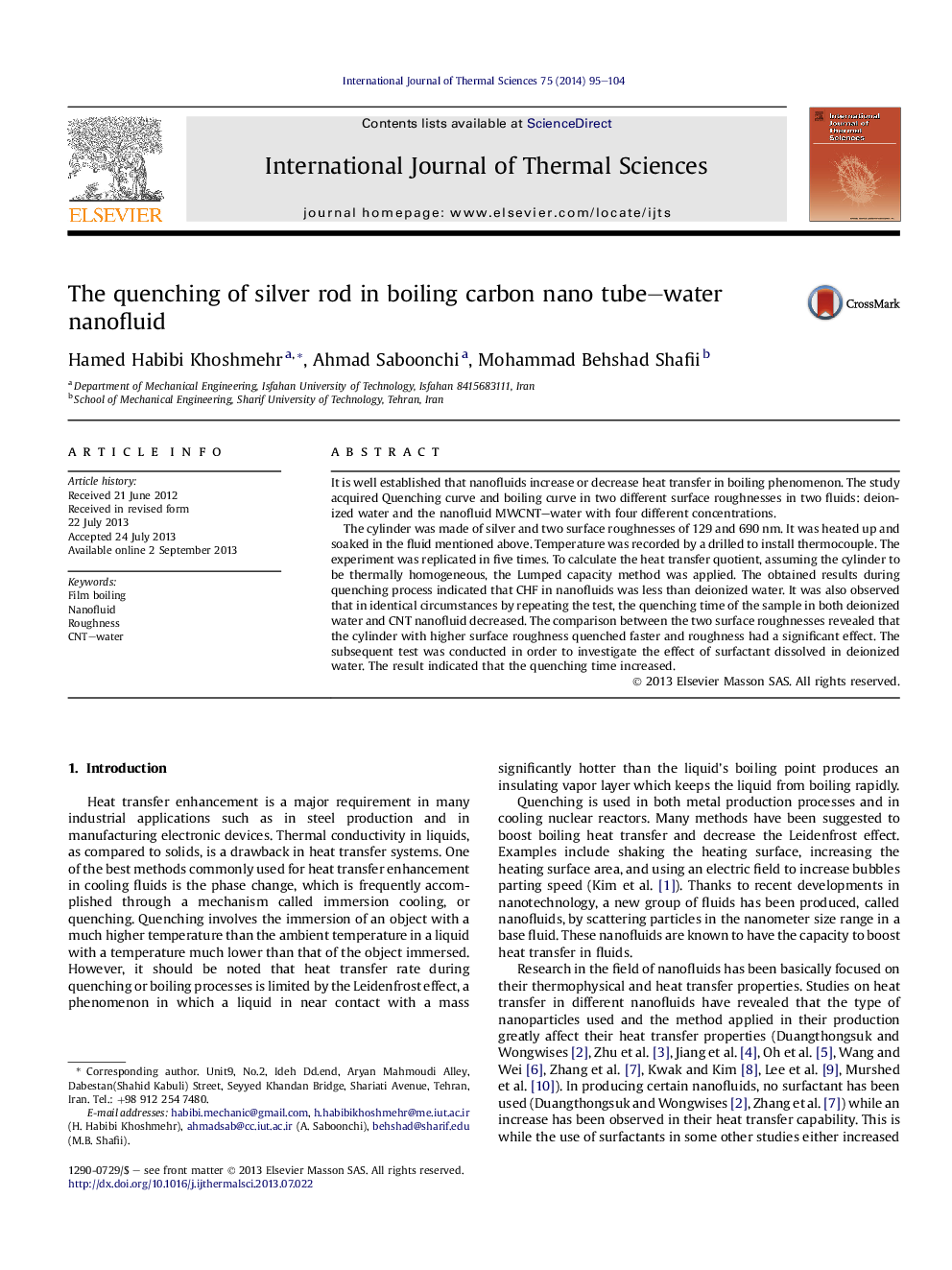| کد مقاله | کد نشریه | سال انتشار | مقاله انگلیسی | نسخه تمام متن |
|---|---|---|---|---|
| 669498 | 1458747 | 2014 | 10 صفحه PDF | دانلود رایگان |
• Dependency of results to repetition decreases with increasing surface roughness.
• The particle of size less than surface inequalities, deposited on these inequalities.
• The lower the concentrations, the less the quenching time.
• As the runs were repeated, the CHF was constant but MHF increased.
• Dissolving the surfactant in water with no CNTs leads to deterioration of quenching.
It is well established that nanofluids increase or decrease heat transfer in boiling phenomenon. The study acquired Quenching curve and boiling curve in two different surface roughnesses in two fluids: deionized water and the nanofluid MWCNT–water with four different concentrations.The cylinder was made of silver and two surface roughnesses of 129 and 690 nm. It was heated up and soaked in the fluid mentioned above. Temperature was recorded by a drilled to install thermocouple. The experiment was replicated in five times. To calculate the heat transfer quotient, assuming the cylinder to be thermally homogeneous, the Lumped capacity method was applied. The obtained results during quenching process indicated that CHF in nanofluids was less than deionized water. It was also observed that in identical circumstances by repeating the test, the quenching time of the sample in both deionized water and CNT nanofluid decreased. The comparison between the two surface roughnesses revealed that the cylinder with higher surface roughness quenched faster and roughness had a significant effect. The subsequent test was conducted in order to investigate the effect of surfactant dissolved in deionized water. The result indicated that the quenching time increased.
Journal: International Journal of Thermal Sciences - Volume 75, January 2014, Pages 95–104
